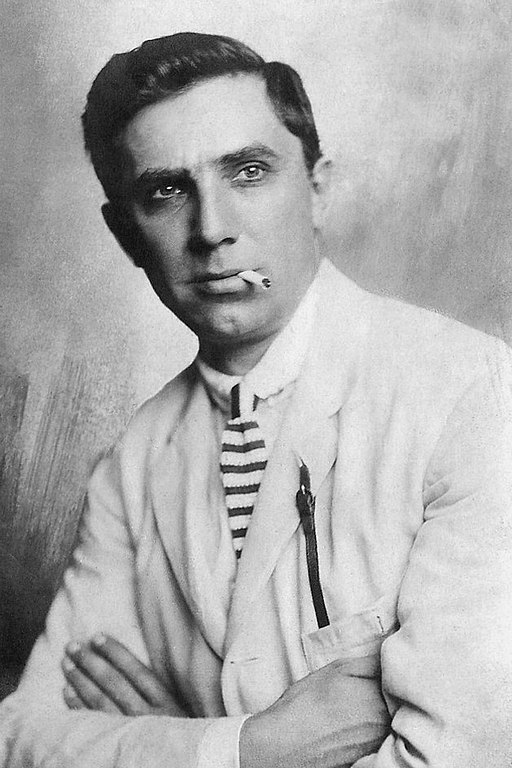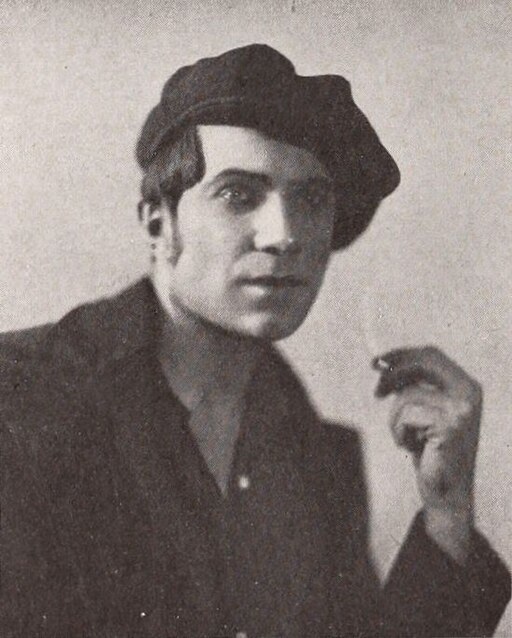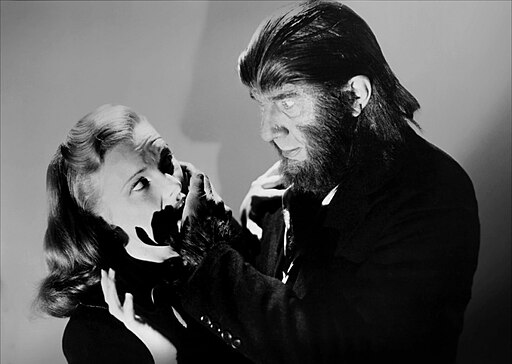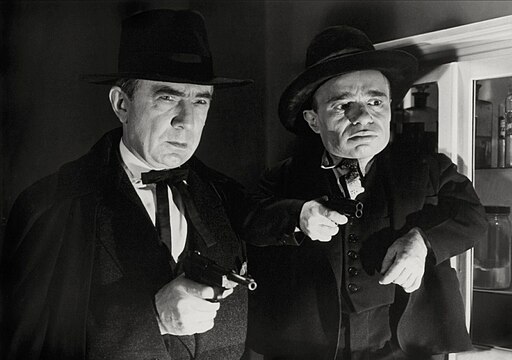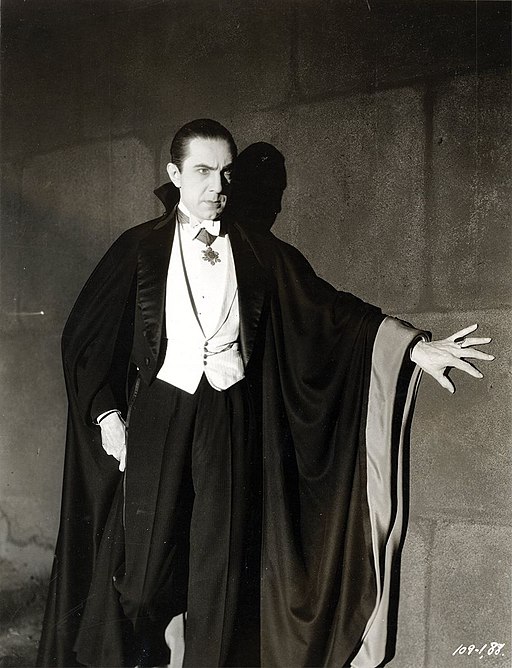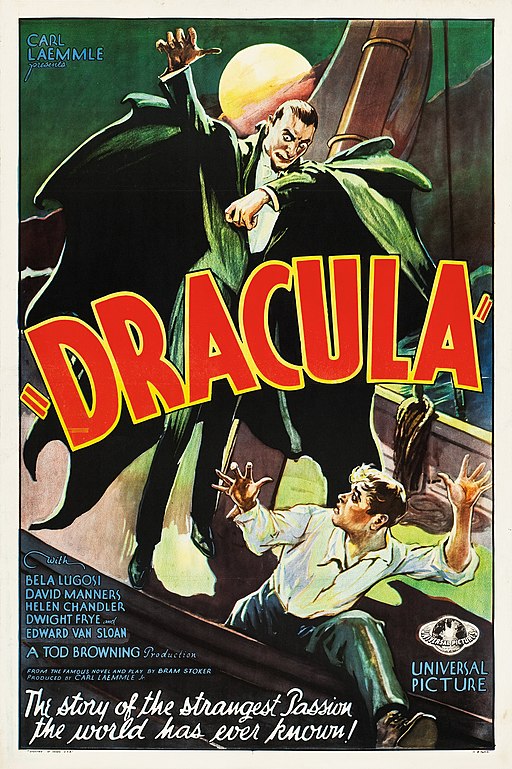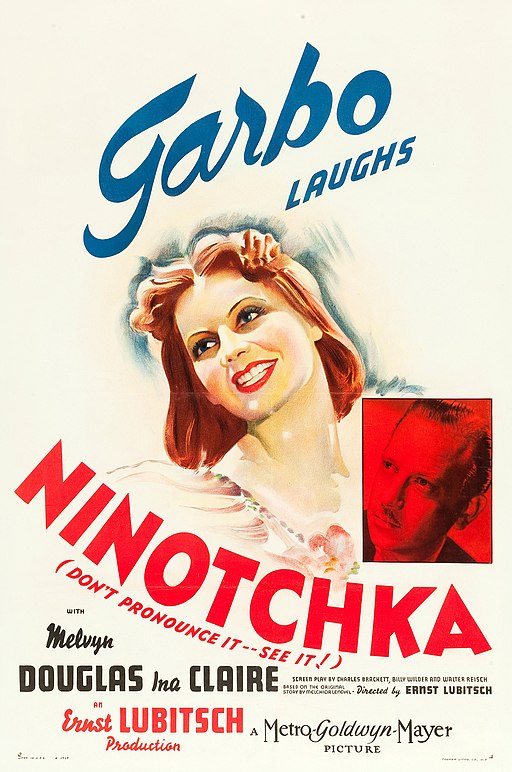Bela Lugosi
back| Full Name | Béla Ferenc Dezső Blaskó |
| Stage Name | Bela Lugosi |
| Born | October 20, 1882 |
| Birthplace | Lugos, Kingdom of Hungary (now Lugoj, Romania) |
| Died | August 16, 1956 |
| Buried | Holy Cross Cemetery, Culver City, California, USA |
| Married to | Ilona Szmik (1917–1920) - Ilona von Montagh (1921–1924) - Beatrice Weeks (1929) - Lillian Arch (1933–1953) - Hope Lininger (1955–1956) |
| Children | Bela G. Lugosi (son with Lillian Arch) |
| Notable films | Dracula (1931) - White Zombie (1932) - The Black Cat (1934) - Son of Frankenstein (1939) - The Wolf Man (1941) |
Bela Lugosi
The Original Prince of Darkness
Despite a rich stage career in Hungary and early success in the U.S., Lugosi was typecast as a horror villain, limiting his roles but ensuring his legacy within the genre.
He starred in numerous films, including "White Zombie" (1932) and "Son of Frankenstein" (1939). Lugosi's life was marked by professional highs and personal struggles, including marriages and battles with addiction.
He died in 1956, leaving behind a complex legacy that transcends his typecasting, celebrated for his contribution to the horror genre and the enduring appeal of his portrayal of Dracula.
Related
Bela Lugosi (1882 – 1956)
Biography and Career Overview
Bela Lugosi, born Béla Ferenc Dezső Blaskó, is best remembered for his iconic portrayal of Count Dracula in the 1931 Universal Pictures film "Dracula," a role that not only defined his career but also became a seminal moment in horror movie history. Lugosi was born in 1882 in the Kingdom of Hungary (present-day Romania), in a small town then known as Lugos. He began his acting career in Hungary in various stage roles before moving to the United States in 1920, following the aftermath of World War I and the political changes in Hungary.
In the U.S., Lugosi worked in the theater before transitioning to film, where he found his niche in horror. His portrayal of Dracula, with his distinctive accent and charismatic presence, was both mesmerizing and terrifying, setting the standard for many vampire films that followed. Despite his success with "Dracula," Lugosi was often typecast in similar roles, limiting his opportunities to display his range as an actor.
Throughout the 1930s and 1940s, Lugosi starred in a series of horror films, including collaborations with Boris Karloff, another iconic actor of the genre. Movies like "The Black Cat" and "Son of Frankenstein" are celebrated for their atmospheric storytelling and the dynamic between Lugosi and Karloff. However, by the 1950s, the quality of roles available to Lugosi had declined, and he found himself starring in lower-budget films.
Lugosi's personal life was marked by multiple marriages and a battle with drug addiction, which ultimately affected his health and career. Despite these challenges, he remained a beloved figure among horror fans. Lugosi passed away in 1956, but his legacy as a horror icon endures, influencing countless films and actors in the genre. He was buried in his full Dracula costume, a testament to the indelible mark he left on the world of cinema as the quintessential vampire.
Bela Lugosi's impact on film and popular culture cannot be overstated. His portrayal of Dracula has become a cultural touchstone, symbolizing the allure and menace of the vampire myth. Beyond his most famous role, Lugosi's filmography includes a diverse array of characters that showcase his talent and versatility as an actor. Despite the challenges he faced, Lugosi's work continues to be celebrated, and he remains a symbol of the golden age of Hollywood horror.
Bela Lugosi as Count Dracula:
Acting Style of Bela Lugosi:
Bela Lugosi's acting style is deeply rooted in the theatrical traditions of his early career in Hungary, characterized by its grandiosity, expressive gestures, and a distinctive, deliberate manner of speech. His transition from the stage to the silver screen in the early 20th century allowed him to craft a screen presence that was both magnetic and unsettling, traits that became his hallmark in the horror genre. Here's a more detailed analysis of his acting style:
Expressive Physicality
Lugosi's performances were marked by a pronounced use of body language and facial expressions. He had a way of moving and holding himself that could convey menace or allure, often simultaneously. His portrayal of Count Dracula, for example, is iconic for its calculated stillness interrupted by sudden movements, such as the dramatic flourish of his cape or the predatory lean towards his victim. This physical expressiveness made Lugosi's characters unforgettable and imbued them with a sense of otherworldly power.
Mesmerizing Vocal Delivery
One of Lugosi's most distinctive features was his deep, accented voice, which he used to great effect. He spoke with a measured cadence, emphasizing certain words and drawing out syllables to create tension or seduction. His accent added an exotic, mysterious quality to his characters, making them seem both foreign and aristocratic. This vocal style was particularly effective in roles like Dracula, where his hypnotic speech pattern mirrored the vampire's supernatural powers of persuasion.
Atmospheric Presence
Lugosi had an innate ability to dominate the screen and create a palpable sense of atmosphere, essential for the horror genre. Even when not speaking or the focus of a scene, his presence was felt. He could convey a wide range of emotions—malice, despair, longing—with a single look. His eyes, in particular, were a powerful tool, capable of expressing everything from the cold detachment of a predator to the pain of an outcast monster.
Typecasting and Beyond
While Lugosi is best remembered for his roles in horror, this typecasting also obscured the breadth of his talent. In his early career, he played romantic leads and complex characters on stage, demonstrating a range that extended far beyond the genre he became synonymous with. However, even within the constraints of typecasting, Lugosi brought depth to roles that could have been one-dimensional, infusing characters like Ygor in "Son of Frankenstein" with a tragic, malevolent humanity.
Legacy
Bela Lugosi's acting style has left a lasting legacy in the horror genre. His performance as Dracula has become the template for countless interpretations of the character, influencing how vampires have been portrayed in cinema for decades. His ability to evoke fear, fascination, and sympathy, often simultaneously, set a standard for horror acting that emphasizes atmosphere, character depth, and the power of subtlety.
Memorable Quotes from Bela Lugosi:
From His Films:
As Count Dracula in "Dracula" (1931):
"Listen to them. Children of the night. What music they make."
"I am Dracula."
As Ygor in "Son of Frankenstein" (1939):
"He does things for me."
As Dr. Eric Vornoff in "Bride of the Monster" (1955):
"I have no home. Hunted, despised, living like an animal! The jungle is my home. But I will show the world that I can be its master."
Personal Quotes:
On Typecasting:
"I am Dracula. I am the King of the Vampires. I have built up my own career and my own personality, and I love the character I created. Dracula is a very important person in my life, and I have no objections to always being associated with him."
On His Craft:
"Every actor is somewhat mad, or else he'd be a plumber or a bookkeeper or a salesman."
Reflecting on His Career:
"It is women who love horror. Gloat over it. Feed on it. Are nourished by it. Shudder and cling and cry out-and come back for more."
On His Legacy:
"I'd like to quit the supernatural roles and play just an interesting, down-to-earth person."
Always Remembered as Dracula:
Bela Lugosi's performance as Count Dracula in the 1931 film "Dracula" directed by Tod Browning is arguably the most defining role of his career, setting a standard for the portrayal of vampires in cinema that endures to this day. This role not only cemented his place in Hollywood but also had a profound impact on the horror genre, the depiction of vampires in popular culture, and Lugosi's professional life. Below are several aspects highlighting the significance of this performance:
Establishing the Vampire Archetype
Lugosi's portrayal of Dracula introduced audiences to an elegant, aristocratic vampire, starkly different from the monstrous figures seen in earlier horror stories. His depiction combined seduction, menace, and nobility, wrapped in a charismatic aura that was both frightening and alluring. This became the template for countless vampire characters in films, literature, and other media that followed, establishing the vampire not just as a creature of horror but as a complex character capable of generating sympathy and intrigue.
Typecasting
While the success of "Dracula" made Bela Lugosi a household name, it also led to his typecasting as a horror villain. Lugosi's deeply embedded association with Count Dracula limited his opportunities to explore a wider range of roles in Hollywood. Despite his considerable acting skills and stage experience, he found himself repeatedly cast in similar roles, often overshadowing his versatility as an actor. This typecasting shaped his career trajectory, making him synonymous with the horror genre.
Influence on the Horror Genre
"Dracula" was instrumental in defining the early sound era of horror cinema, influencing the direction and aesthetic of horror films for decades. It helped establish Universal Pictures as a major player in the production of horror films, leading to the creation of other iconic characters like Frankenstein, the Wolf Man, and the Invisible Man. Lugosi's performance contributed to the popularity and legitimacy of the horror genre, encouraging studios to invest in similar productions.
Cult Status and Legacy
Lugosi's Dracula has achieved a cult status among horror fans and cinephiles. The character's iconic look and mannerisms, from the distinctive cape to the hypnotic gaze, have been immortalized in film history. This role has not only ensured Lugosi's enduring legacy but has also made him an enduring symbol of the golden age of Hollywood horror. His portrayal is studied in film classes, celebrated in retrospectives, and continues to influence the portrayal of vampires and other supernatural beings in cinema.
Personal Impact
On a personal level, the role of Dracula brought Lugosi fame but also presented challenges. His identification with the character was so strong that it both defined and confined his career. Despite these challenges, Lugosi embraced his association with Dracula, recognizing the character's impact on his life and the opportunities it provided, even as he aspired to broader roles.
Awards and Recognition:
Lifetime Achievements and Recognition:
- No Academy Awards (Oscars): Lugosi was never nominated for an Oscar. It's worth noting that the Academy Awards, established in 1929, did not originally celebrate the types of genre performances that Lugosi was known for.
- No Golden Globes: Similarly, Lugosi did not receive any nominations or awards from the Golden Globe Awards, which were first awarded in 1944.
Posthumous Recognition:
- Star on the Hollywood Walk of Fame: Lugosi was awarded a star on the Hollywood Walk of Fame for his contributions to the Motion Picture industry, located at 6340 Hollywood Blvd. This recognition is a testament to his lasting impact on cinema.
- Cult Status and Retrospective Awards: Over the years, Lugosi has achieved a cult status among horror and cinema fans. Various horror film festivals and genre-specific awards have honored Lugosi and his films in retrospective recognitions and tributes. However, these are more informal and are not equivalent to mainstream industry awards like the Oscars or Golden Globes.
Legacy and Influence:
Although Bela Lugosi did not receive a significant number of awards during his career or in the form of posthumous industry recognitions, his influence on the horror genre and pop culture is undeniable. His portrayal of Dracula has become iconic, setting the standard for vampire characters in cinema and beyond. His impact is often celebrated in film retrospectives, documentaries, and by the horror fan community through conventions and film screenings.
Lugosi's situation underscores a broader historical context where actors known primarily for work in horror and other genre films were often overlooked by major awarding bodies, a trend that has only begun to shift in recent decades. Despite the lack of formal awards, Lugosi's legacy as a foundational figure in horror cinema endures, celebrated by generations of fans and filmmakers inspired by his work.
Notable Movies featuring Bela Lugosi:
1920s to 1930s:
- Dracula (1931): Lugosi stars as Count Dracula, the iconic vampire who travels from Transylvania to England to prey upon the living. This film established Lugosi as a horror icon and set the standard for vampire portrayals.
- Murders in the Rue Morgue (1932): Inspired by Edgar Allan Poe's story, Lugosi plays Dr. Mirakle, a mad scientist who kidnaps women to inject them with ape blood.
- White Zombie (1932): Considered the first feature-length zombie film, Lugosi portrays 'Murder' Legendre, a voodoo master who turns people into zombies in Haiti.
- The Black Cat (1934): Lugosi stars alongside Boris Karloff in this story about satanism and supernatural revenge in Hungary.
- Mark of the Vampire (1935): A remake of the lost film "London After Midnight," Lugosi plays Count Mora, a vampire suspected of causing a series of murders.
- The Raven (1935): Lugosi plays a brilliant but deranged surgeon obsessed with Edgar Allan Poe, who tortures his victims with surgical instruments.
- Son of Frankenstein (1939): Lugosi delivers a memorable performance as Ygor, a twisted shepherd with a broken neck, who befriends the son of Dr. Frankenstein.
1940s:
- The Black Cat (1941): Not related to the 1934 film of the same name, this comedy-horror film features Lugosi in a smaller role amidst a story of inheritance and mystery.
- The Wolf Man (1941): Lugosi plays Bela, a gypsy who turns into a wolf after being bitten, setting the stage for the film's protagonist to be cursed as a werewolf.
- Ghost of Frankenstein (1942): Ygor (Lugosi) returns, attempting to transplant the brain of Frankenstein's monster with a more suitable one to control the creature.
- Frankenstein Meets the Wolf Man (1943): Lugosi plays Frankenstein's monster in this crossover film that also features the Wolf Man seeking a cure for his curse.
1950s:
- Abbott and Costello Meet Frankenstein (1948): Although technically the late 1940s, this crossover comedy features Lugosi reprising his role as Dracula, trying to revive Frankenstein's monster.
- Bela Lugosi Meets a Brooklyn Gorilla (1952): Lugosi plays Dr. Zabor, a mad scientist on a tropical island experimenting on a pair of shipwrecked comedians.
- Glen or Glenda (1953): Directed by Ed Wood, Lugosi plays a cryptic scientist narrating the complexities of gender identity and transvestism.
- Bride of the Monster (1955): Lugosi stars as Dr. Eric Vornoff, who is experimenting with atomic power to create super-beings.
Final Film:
- Plan 9 from Outer Space (1959): Released posthumously, this cult classic directed by Ed Wood features footage of Lugosi shot before his death. The film is famously known for its low-budget production values and has been celebrated as one of the "worst" movies ever made.

